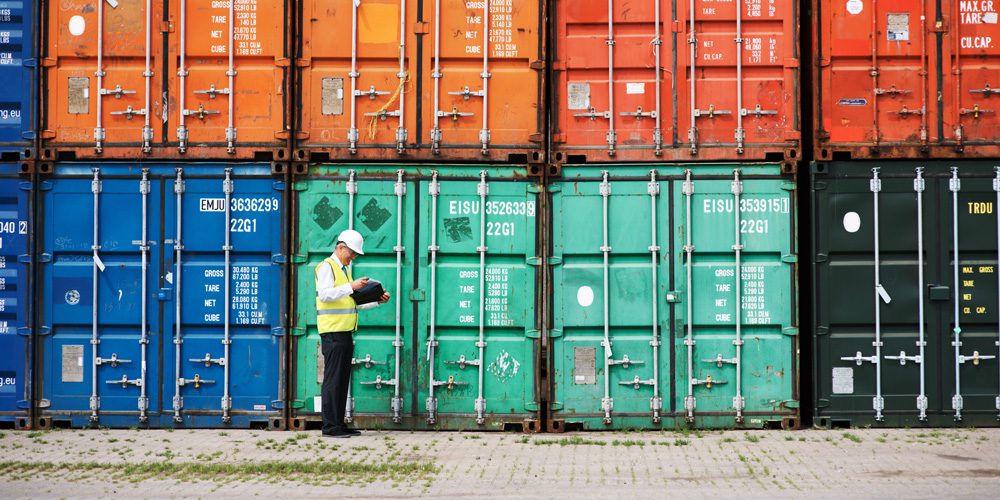Home » How to fix our broken supply chains
How to fix our broken supply chains

Companies need real time data and smart technology to navigate rapidly multiplying disruptions.
The past two years have delivered stark lessons in the fragility of global supply chains. Assumptions held for decades — that goods can cross borders seamlessly; that manufacturers could rely on parts arriving when needed; that “out-of-stock” was only ever a blip — have been upended in months.
“COVID-19 was a true black swan event that is forcing supply-chain change,” says Mark Morley, supply chain industry expert and senior director of product marketing at OpenText, which creates information management solutions for businesses. Throw in the rapid shift toward online shopping, which requires a different fulfillment model from in-store sales, and you have some enormous headaches for supply chain managers.
So, how should companies think about moving parts and products in an uncertain world? Here are Morley’s suggestions.
Just-in-case is the new just-in-time
Until recently, companies prized lean supply chains that kept overheads low by minimizing the amount of stock held in warehouses. That’s still true, but resilience, flexibility and sustainability are also growing in importance. The increase in wild weather — such as storms that washed out crucial freight rail lines from Vancouver’s port late last year — has also focused executives’ minds on building some slack into their systems. It’s notable that companies whose supply chains have performed the best recently are those that have invested strategically in technology and partnerships that build resilience into their operations and allow them to react quickly.
Supply chains shouldn’t be opaque
When the movement of goods ground to a halt at the start of the pandemic, many companies discovered how little insight they had into their own supply chains. They might have known a consignment had shipped, but determining its exact location was much harder. Surprisingly large parts of global supply chains are still coordinated by email and PDF documents, making it cumbersome to track down important information. Less surprisingly, a survey last year found that increasing visibility into their supply chains was a top priority for executives.
Some companies now go so far as to use sensors that allow them to see exactly where a shipping container is and even monitor factors like temperature and humidity for sensitive goods like frozen foods and medicines. But at minimum, businesses now need a modern, centralized system for tracking the flow of goods through their supply chains that enables staff to quickly pinpoint problems and come up with fixes in real time.
Integrated data is key to managing disruption
Modern supply chains aren’t chains at all. They’re more like webs that connect hundreds or even thousands of different suppliers. Bottlenecks can reverberate through such systems in complex and unpredictable ways. One analysis found the global microchip shortage has impacted 169 industries, extending to activities far from electronics, such soap manufacturing.
The best way for companies to mitigate such problems is to integrate data from all players into a single supply chain management platform that acts as a kind of control tower for the whole system. Having clear real-time information about what’s happening from end to end of the supply chain makes it easier to troubleshoot problems with logistics partners and predict what impact delays might have further down the line. Such platforms can also help push information the other way, quickly alerting suppliers to fluctuations in demand for products so they can react accordingly.
Cloud-based platforms offer resilience
Controlling supply chains is a complex IT challenge, but it’s one that cloud-based platforms are ideally suited to. An integrated platform needs to be able to securely share data with countless business units, suppliers and customers, and so requires constant investment to update applications. For companies that keep their servers in-house that can be expensive and diverts staff time from more impactful tasks. Operators of cloud-based platforms do this automatically, alongside providing resilience measures such as having multiple servers and data backups to minimize disruption should something go wrong. They also help organizations ensure their systems are patched against the latest cybersecurity threats.
Smart supply chains do more than move goods
Understanding the flow of parts and materials with real-time data also has long-term strategic benefits. Companies can use this information to look for efficiencies and find areas where digitization could increase productivity. In addition to improving their bottom lines, having a full picture of what’s happening in their supply chains can also help companies reduce waste and meet their sustainability goals.
Building for the future
To avoid further business disruptions, companies not only need to restructure their physical supply chains, they must also consider modernizing the accompanying IT and integration infrastructures. Ensuring all the information flows are digitized and available in the cloud helps to foster collaboration and provide greater visibility, which allows supply chain processes to be further optimized. “Companies that can adapt their supply chains in this way are the ones that will survive,” says Morley. “And for any company in today’s dynamic business environment, that should be priority number one.”
Canada is experiencing its greatest innovation boom ever. MaRS sits at the fulcrum of that progress. Read our latest to Impact Report to learn more.
MaRS Discovery District
https://www.marsdd.com/
MaRS is the world's largest urban innovation hub in Toronto that supports startups in the health, cleantech, fintech, and enterprise sectors. When MaRS opened in 2005 this concept of urban innovation was an untested theory. Today, it’s reshaping cities around the world. MaRS has been at the forefront of a wave of change that extends from Melbourne to Amsterdam and runs through San Francisco, London, Medellín, Los Angeles, Paris and New York. These global cities are now striving to create what we have in Toronto: a dense innovation district that co-locates universities, startups, corporates and investors. In this increasingly competitive landscape, scale matters more than ever – the best talent is attracted to the brightest innovation hotspots.


